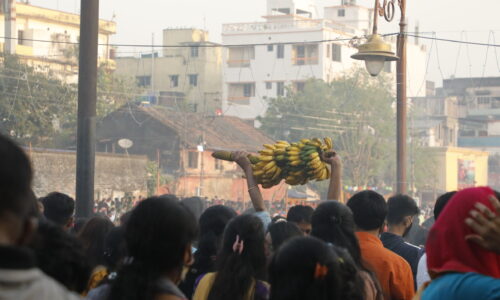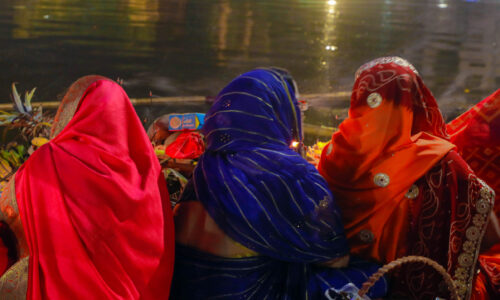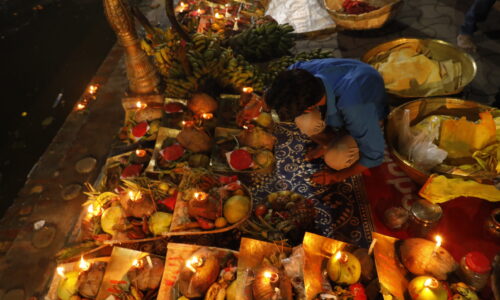A festival dedicated to Lord Surya, the Sun God-god of energy and life force, is widely celebrated across Bihar, Jharkhand, Uttar Pradesh, parts of West Bengal, and even Nepal. During Chhath Puja, women fast and pray to Lord Surya and Chhathi Maiya to ensure success and prosperity for their families and children.
Traditionally, Chhath Puja falls after Diwali or on the sixth day of Kartik. In preparation for Chhath, devotees begin eating only Satvik food (without onion or garlic) the day after Diwali, prepare all meals with utmost hygiene, and eat only after bathing.
Out of the many things, bananas are something you will spot everywhere during Chhath Puja. There’s a unique reason behind it: a bunch of bananas is offered to the Lord as a form of prasad. It is believed to be the favourite fruit of Lord Vishnu.
Thousands of devotees make offerings (Arghya) to the setting sun on the banks of rivers in the evening. As the third day approaches, a colourful event called Kosi is witnessed. Sugarcane sticks are used for constructing a canopy, and earthen lamps and baskets filled with prasad are placed within it. In the early morning hours of the fourth and final day of Chhath, family members and friends make offerings (Arghya) to the rising sun along the banks of rivers. The fast is broken after this ritual by distributing Prasad to neighbours and relatives.

Bornona Barik
Bornona barik is a mass communication student from Kolkata. She is currently exploring the different niches and avenues under the vast industry of media. Photography is her passion and the way pictures frame one's understanding and empathy towards a piece of news compels me to learn more about the intricacies of photojournalism in the future. Apart from photography, books and cinema keeps her busy. She is also an avid traveller and enjoy exploring off-beat destinations.













Good day! I just wish to offer you a big thumbs up for the great information youve got right here on this post. I will be coming back to your web site for more soon.
I got what you intend, regards for putting up.Woh I am lucky to find this website through google. “Those who corrupt the public mind are just as evil as those who steal from the public.” by Theodor Wiesengrund Adorno.
I really enjoy studying on this internet site, it has excellent blog posts. “Words are, of course, the most powerful drug used by mankind.” by Rudyard Kipling.
Hello! I just would like to give a huge thumbs up for the great info you have here on this post. I will be coming back to your blog for more soon.